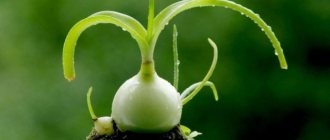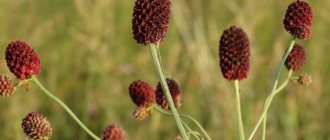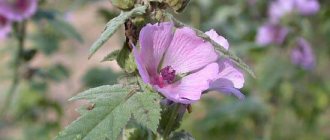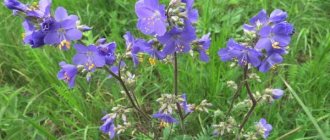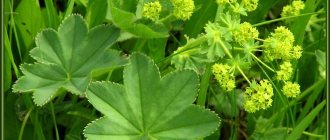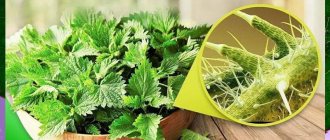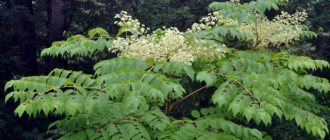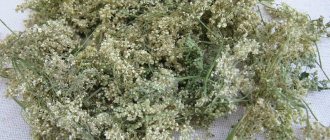Marsh wild rosemary (marsh rosemary, hemlock, forest rosemary, swamp stupor) is a perennial plant from the Ericaceae family, which has a special appearance and smell. People who are far from botany, who at least once see this plant, touch the specific leaves and smell it, will remember the puzzle for the rest of their lives and will no longer confuse it with another culture. It is poisonous and therefore requires care when collecting and preparing, as well as strict dosing when used for therapeutic purposes.
Holarctic species, mycotroph. It is characterized by a large range in Russia: it grows in the tundra, the European part, Siberia and the Far East. Grows in Ukraine, Belarus (especially in Polesie, where there are many swamps). Found in Alaska and Canada.
A typical place to see the plant is a moss bog, peat bog or swampy coniferous forest. Very often forms thickets, dominating other vegetation. A frequent “neighbor” of swamp stupor is blueberry, a useful and rare berry.
Today, the medicinal properties and contraindications of wild rosemary have been well studied, which makes it possible to use it in official and folk medicine, but strictly according to indications.
What it looks like and where it grows
Marsh wild rosemary is an evergreen perennial plant belonging to the Heather family. It is also called swamp stupor. It can reach a height of 150 cm. A characteristic feature of the plant is a specific smell reminiscent of incense. Swamp wild rosemary has recumbent stems and pubescent shoots. The roots of the plant go into the ground to a depth of 40 cm.
The flowers of the swamp stupor are collected in an umbrella-shaped shield. They come in both pink and white. The flowering period occurs in May-June. The fruits of the plant are an oblong capsule with five valves. When ripe, it opens and releases golden seeds.
Ledum grows in permafrost and marshy areas. It is found in Central Europe, Ukraine and Scandinavia. On the territory of Russia it lives in Transbaikalia and the Far East. Before using wild rosemary, you need to study its medicinal properties and contraindications. A photo of the plant is presented below:
Swamp stupor is often found in swampy coniferous forests
Comment! Taking medicinal herbs may cause increased drowsiness. Therefore, it is advisable to take it before bed.
Morphological description
The evergreen swampweed is a shrub that reaches a height of 50-60 cm, sometimes it can grow more than 1 meter. The roots can grow to a depth of 30-40 cm. The shrub is erect: the stems are recumbent, rooting, and have a large number of ascending branches. The shoots are rusty tomentose. Old branches have bare bark of a grayish-brown color without edges.
The leaves are on short petioles, alternate, linear or oblong-elliptical in shape. Leaf length – 0.7-4 cm, width – 2-10 mm. The edge is slightly pointed or blunt. The leaves are quite dense, leathery, wrinkled, shiny with small glands on top and brown-felt underneath. The edge is solid, slightly turned downwards. Petioles are short.
The flowers are located on thin glandular stalks and reach a diameter of 8-10 mm. The color is white, sometimes reddish, the smell is strong, sometimes stupefying. Collected into shields or umbrella brushes of 16-25 pieces. The corolla is white, consists of 5 free elliptical petals and has a length of 5-7 mm. The calyx has 5 rounded teeth, small, remaining with the fruit. The sepals are brownish-pubescent, sticky, have a rounded shape with a ciliated edge. The stamens exceed the corolla in length (10 pieces). The filaments are expanded and pubescent at the base. The anthers open with holes. The pistil has an upper, five-locular ovary. The style is single, filiform, small, and has a five-lobed stigma. There is a nectar disc around the ovary.
Flowering occurs in May-July, and fruit ripening occurs in July-August. The fruit has a length of 3-8 mm and has the appearance of an oblong multi-seeded elliptical five-locular capsule, glandular. At the top there is a column. The stalks are long and curved downwards. When ripe, the box splits upward along the flaps. The seeds, approximately 1.5 mm long, are fusiform, small, flat, light yellow in color with wing-like membranous appendages at the ends. Propagated vegetatively and by seeds.
Chemical composition of wild rosemary
The healing properties of wild rosemary are achieved thanks to its unique composition. The specific smell of the plant is due to the rich content of essential oils. Their highest concentration is located in the leaf part. In addition to them, wild rosemary contains many minerals and vitamins. Iceol contained in the plant is often used to make medicines. It is effective in the fight against rheumatism and joint pain.
The composition of wild rosemary also includes:
- arbutin;
- flavonoids;
- essential oils;
- coumarins;
- glycosides;
- tannins;
- ascorbic acid;
- phytoncides;
- andromedotoxin;
- neomertellin.
Tannins in swamp stupor help cope with inflammatory processes and have a positive effect on digestion. Neomertellin acts as a natural insulin. It can help lower blood sugar levels.
Due to the content of ascorbic acid, swamp stupor stimulates the immune system and has an antioxidant effect on the body. Coumarins in wild rosemary have an antiviral effect and quickly cleanse the body of toxins. Notably, andromedotoxin present in the plant is a known toxin. In excess quantities it can be harmful to health.
Other uses of the plant
- In everyday life, dry leaves can be used as a natural insecticide, fumigating rooms with them or spraying the decoction in places where flies, mosquitoes, bedbugs, and cockroaches accumulate.
- Powder from the plant or dry twigs help get rid of moths: they are used to arrange clothes or hang bunches in the closet.
- Essential oil mixed with tar is used for tanning leather, in perfumery, textile industry, and soap making.
- Previously, they tried to use bogwort instead of hops in brewing (counterfeit). However, the drink was too intoxicating, causing delirium, headache and dizziness, abdominal pain, and colic.
- It is a good honey plant, but the honey on it becomes poisonous, so it should not be eaten. Such honey can only be used by bees for the development of the colony. For this reason, it is impossible to collect and eat untested honey from wild bees, since it is not known from what plants it was obtained.
- It is used in veterinary medicine to treat domestic animals: pigs, cows, horses with epidemic diseases, colic, poisoning.
What does wild rosemary help with and what does it cure?
Marsh wild rosemary helps against many diseases related to the respiratory system. It is effective even against asthma and tuberculosis. Especially noticeably it copes with various types of cough. Due to its anti-inflammatory effect, it can be used as an antiseptic. It effectively disinfects wounds and inhibits the proliferation of staphylococcus in the body. In addition, swamp stupor is used to treat the following diseases:
- bronchitis and tracheitis;
- acute rhinitis;
- dysentery;
- ARVI;
- rheumatism;
- arthritis;
- pneumonia and tuberculosis;
- inflammatory processes in the genitourinary system;
- intestinal diseases;
- dysbacteriosis;
- hypertension.
The most valuable medicinal properties of marsh wild rosemary include its ability to resist pathogens. Thanks to this, it can be used in the treatment of almost any inflammatory disease.
The root part is famous for its high content of essential oils
To eliminate stomach diseases, the root part of swamp stupor is used. Treatment of colds is carried out using leaves and stems.
Advice! Before using wild rosemary, it is advisable to test for an allergic reaction.
What are the benefits of wild rosemary for women?
For women, wild rosemary is indicated for the treatment of genitourinary infections, which often cause infertility. For these purposes, a decoction of a medicinal plant is used. It is taken orally and used for douching. During treatment, it should be taken into account that the infusion provokes the toning of the uterus.
Useful properties of wild rosemary for men
Men often use swamp stupor to treat impotence and prostatitis. The substances in its composition help stop inflammation, thereby eliminating stagnant processes. Against this background, blood circulation in the genital area improves and erectile function improves.
Is wild rosemary allowed for children?
Medicinal products prepared from wild rosemary can be given to children over 7 years of age. Such restrictions are based on the content of toxic substances that can have a detrimental effect on a fragile organism. At an older age, the possibility of using the plant is discussed with a pediatrician. For children, wild rosemary decoction helps relieve coughs and helps remove mucus from the lungs. Sometimes it is used to treat intestinal infections.
Pharmaceutical preparations with wild rosemary
Official medicine has long paid attention to this poisonous but beneficial plant. In the pharmacy chains of Russia and post-Soviet countries you can buy the following preparations with swampweed:
- Ledin . Tablets based on sesquiterpene alcohol isolated from wild rosemary essential oil. It is used to suppress the cough reflex in case of bronchitis and other pulmonary diseases (acute and chronic), laryngitis, tracheitis.
- Shoots/grass of wild rosemary . Dry herbal raw materials, which are prescribed for bronchopulmonary diseases (acute and chronic), in which cough occurs.
- Ledum-GF . Homeopathic ointment for external use, characterized by analgesic and antipruritic effects. Indicated for pain accompanying joint diseases and itching after insect bites.
- Fitopril . A drug with a complex composition, a natural beta blocker. Used to prevent cardiovascular diseases (stroke, arrhythmia, angina, etc.)
Cooking methods
There are several ways to use wild rosemary for medicinal purposes. It can be used to make tincture, decoction, tea, drops and other traditional medicine. They will be distinguished by the concentration of active substances and treatment regimen. The duration of treatment is determined by the nature of the disease. When preparing a medicinal product, you must follow the recipe and algorithm of actions.
We recommend reading: Tea with thyme: beneficial properties and contraindications
Tincture
Swamp wild rosemary tincture is recommended to be used transdermally. Internal administration must be carried out in limited dosages. It is permissible to dilute the tincture with clean water.
Components:
- 3 tbsp. l. wild rosemary leaves;
- 500 ml alcohol.
Recipe:
- The dried raw materials are poured into a glass container and filled with alcohol.
- Cover the container tightly with a lid and put it in a dark place for 3-4 days.
- After the specified time, the liquid is filtered.
- The tincture is used to rub joints 2 times a day.
To prepare a tincture of swamp stupor, it is advisable to use freshly prepared raw materials
Infusion
The herbal infusion is especially effective against cough. It cleanses the bronchi and promotes mucus separation. The duration of treatment with infusion is on average 2-3 weeks.
Ingredients:
- 10 g dried wild rosemary;
- 500 ml water.
Cooking process:
- Ledum is poured into a thermos and filled with hot water.
- The duration of infusion of the drink is 1 day.
- Before use, filter the infusion.
- Reception is carried out in ½ tbsp. 2 times a day.
The infusion can be drunk both chilled and hot
Decoction
A decoction of swamp stupor is considered an effective immunomodulatory agent. It increases the body's defenses and stops inflammatory processes. With the right approach, the decoction helps to cope with infectious and viral diseases.
Components:
- 1 tbsp. l. dry leaves;
- 250 ml water.
Recipe:
- The swamp stupor is filled with water and put on fire.
- After boiling, it needs to be kept on the stove for 3-4 minutes.
- After removing from the heat, the drink is infused for an additional 30 minutes.
- Take 1 tsp. 4-5 times a day.
To prepare the decoction, it is permissible to use raw materials purchased at the pharmacy.
Tea
The benefits and harms of wild rosemary tea should be studied before preparing it, and not immediately before taking it. Under some circumstances, a medicinal drink can have a negative effect on your health.
Ingredients:
- 5-6 whole wild rosemary leaves;
- 1 liter of water.
Recipe:
- The leaves are poured with hot water and kept for 2-3 hours.
- The resulting composition is added to a kettle with black tea, 2-3 tbsp. l.
- Ledum tea is taken 2-3 times a day, 1 tbsp.
To soften the taste, you can add sugar or honey to tea.
Drops
Drops made from wild rosemary are used to treat a runny nose. They are instilled into each nasal passage, 2 drops 3-5 times a day.
Ingredients:
- 1 liter of water;
- 25 g wild rosemary shoots.
Cooking steps:
- The shoots are crushed and filled with water.
- They are infused in a warm place for 8 hours.
- Before use, filter the product.
- Take up to 5 times a day, ½ tbsp.
It is advisable to store the drops in a dark bottle
Oil
Components:
- 100 g olive oil;
- 1 tbsp. l. chopped wild rosemary.
Cooking steps:
- The herbal powder is poured with oil and left in a dark place.
- After 21 days, the medicinal product is filtered using gauze and used as directed.
Swamp stupor oil can be stored at room temperature, but not longer than 2 years
Ointment
The ointment is applied locally to painful areas. It copes with joint pain and rheumatism. It is sometimes used to combat certain skin diseases.
Components:
- 5 tbsp. l. vegetable oil;
- 2 tbsp. l. dried wild rosemary.
Cooking process:
- The components are thoroughly mixed in a deep container.
- The ointment is infused in the oven at low power. The duration of infusion is 12-15 hours.
- After removing from the oven, the medicinal product is cooled.
Dried swamp stupor is affordable
Important! During pregnancy, the use of swamp stupor provokes a miscarriage.
Medicinal properties
The medicinal properties of wild rosemary make up quite an impressive list. The rich polyphenolic fraction gives wild rosemary analgesic, anti-inflammatory, antimicrobial, antiviral, wound-healing, antifungal and insecticidal, diaphoretic potential, which is confirmed by research.
- The expectorant property of wild rosemary is successfully used in the treatment of cough.
- Ledum is good for the kidneys. It prevents the formation of kidney stones.
- Frees the liver from toxic substances and has the ability to regenerate liver cells.
- Relieves stress and is a good sleep aid.
- It has a mild laxative effect, but at the same time pacifies diarrhea.
- The anti-inflammatory property helps fight arthritis pain.
- It has long been used for dizziness, rheumatism and rashes.
- Ledum is one of the natural remedies with an abortifacient effect.
- To treat tuberculosis, a decoction of wild rosemary flowers is used.
The use of wild rosemary in folk medicine
The medicinal properties of the herb marsh wild rosemary allow it to be used in alternative medicine. It is most widely used in the treatment of cough. But there are other indications for taking the drug.
For joint diseases
For joint diseases, a medicinal ointment made from pork fat is used. Lay the leaves and fat into the pan in layers. Then the container is placed on low heat in the oven. The duration of infusion is 4 hours. After this, the product is filtered using gauze. The resulting medicinal ointment should be rubbed into sore joints 2 times a day.
Against hypertension
Ledum is useful for humans and in the treatment of hypertension. For these purposes, a medicinal infusion is used. You need to drink it 1 tbsp. l. 3-4 times a day. This allows you to equalize blood pressure, thereby improving your well-being.
Treatment of wounds and abrasions
Swamp stupor has a pronounced regenerative effect. Oil with its addition helps cope with skin diseases and speed up the healing process of wounds and abrasions. The oil is applied to the problem area before going to bed.
For varicose veins
For varicose veins, they practice using wild rosemary tincture in vodka. It is applied to the affected areas 2 times a day. The duration of treatment is 10 days. This helps reduce the visibility of vascular nodules and relieve heaviness in the legs.
How to brew wild rosemary for coughs for children
If a child has a cough, it is most preferable to use wild rosemary decoction. To improve the taste, you can add honey or mint to it. The daily dosage of the medication is calculated taking into account weight. For small children, it is enough to give ½ tsp. decoction of swamp stupor 3 times a day. Over the age of 14 years, you can take 80-90 ml of decoction per day.
We recommend reading: Mint tea: beneficial properties and contraindications, how to make
How to brew wild rosemary for cough for an adult
Experts recommend drinking wild rosemary for coughs and for adults. Swamp stupor has a pronounced expectorant effect. First, it transforms a dry cough into a wet one, and then ensures that the bronchi are cleared of mucus. Ledum is effective for both chronic and acute types of cough.
Before brewing marsh rosemary, you need to familiarize yourself with the recommended proportions. For 500 ml of hot water you will need 2 tbsp. l. dry mixture. It is advisable to use a thermos to infuse the medicinal drink. Treatment with wild rosemary is carried out until symptoms disappear completely. Drink the infusion 1 tbsp. l. every 6 hours.
Ointment can be prepared from any part of the swamp stupor
Scientific research on wild rosemary
The earliest known mentions of the plant date back to the 12th century and are found in Danish herbariums. In Europe, swampweed was introduced into medicinal practice by Swedish doctors. The famous scientist Carl Linnaeus wrote an essay about the healing properties of the plant in 1775.
In folk medicine, this odorous healer has been used since the 16th century, especially in Sweden and Germany, where it was positioned as a remedy for various diseases of internal organs and skin.
It has been used in Russia since the 19th century, but was known to scientists much earlier.
- Thus, in 1496, Rauchfus K. A. was the first to obtain essential oil from the raw material of a plant and described that it consists of a crystalline and liquid part.
- In 1912, academician Krylov A.P. For the first time, the tactics of treating whooping cough with plant preparations was described.
- Later, in 1943, Professor Tatarov A.P. wrote about the rapid effect of wild rosemary on coughs accompanying acute bronchitis and bronchial asthma, which was proven in the treatment of patients during the Second World War.
- In 1945, Dyakov N.N. also described the beneficial properties that made it possible to use the plant for the treatment of bronchial asthma.
- For the first time, the structural formula of tricyclic sesquiterpene alcohol - iceol was proposed by N. P. Kiryalov in 1949. And the discovery of an antiallergic effect and a mild hypertensive effect made it possible to recommend wild rosemary to patients with cough syndrome who suffer from hypertension.
Soviet scientists wrote that even long-term use of swampweed does not cause an addictive effect. Therefore, its drugs can be used for several years, for example, as maintenance therapy for asthma, pulmonary tuberculosis and other chronic pathologies of the bronchopulmonary system in which cough occurs.
At the beginning of the 21st century, under the leadership of Professor Berezovskaya T.P., the first fundamental research of the plant was carried out on the basis of the Siberian Medical University: the pharmacological activity and high resource of bogwort as a biologically active substance were established.
In 2004, an experimental study of the antioxidant properties of an extract extracted from wild rosemary shoots collected in various parts of Russia from 1988 to 2003 was conducted at Tomsk Medical University. The study was conducted on white laboratory mice and found that the plant can be used to prevent the development of free radical processes in the human body, which lead to damage to cellular structures. The studied plant extracts showed pronounced antimutagenic activity, which once again proved the legitimacy of using the medicinal properties of wild rosemary as an antioxidant plant.
Application in cosmetology
The healing plant is often used to eliminate cosmetic imperfections. Among the indications for the use of marsh rosemary are acne and redness. To eliminate these problems, a herbal infusion is used instead of a cosmetic lotion. They wipe pre-cleansed facial skin twice a day. For severe skin diseases, it is recommended to take baths with the addition of herbal infusion.
For healthy hair, use oil made from wild rosemary. It is applied as a mask and left for 20 minutes. Then the product is washed off with warm water. This procedure makes the hair more crumbly, soft and shiny.
Useful properties and indications
Ledum herb has a number of positive effects:
- bactericidal;
- disinfectant;
- antioxidant;
- tonic;
- antitussive;
- expectorant;
- hypotensive;
- diuretic;
- sweatshop;
- anti-inflammatory;
- antipruritic;
- anti-allergic.
Indications for the use of plant preparations are extensive. The most common of them are:
- laryngitis;
- acute and chronic bronchitis;
- whooping cough;
- pulmonary tuberculosis;
- hypertension;
- spastic enterocolitis;
- acute rhinitis;
- flu;
- diabetes;
- dysentery;
- rheumatic and gouty joint diseases;
- rheumatism;
- deforming arthrosis, polyarthritis;
- eczema, neurodermatitis, scrofulosis, rashes of various origins, lichen, insect bites;
- external bleeding;
- wounds, bruises.
It is most often used as an antitussive: it softens a painful cough, makes it productive, improves the discharge of sputum and its removal from the lower parts of the bronchial tree, relaxes the smooth muscle tissue of the bronchi.
Some unscrupulous traditional healers advise using strong decoctions of the plant to terminate an unwanted pregnancy. However, the opinion of doctors on this matter is categorical: this is unacceptable. Against the background of such stimulation of miscarriage, not only the embryo suffers, but also the mother’s body, which is subjected to severe intoxication, and its consequences may be irreversible.
Contraindications to the use of wild rosemary and possible harm
Due to the content of toxic substances, marsh wild rosemary can bring not only benefits, but also harm to health. That is why it has a number of contraindications. These include:
- hepatitis;
- inflammatory processes in the kidneys;
- neurological disorders;
- pregnancy;
- pancreatitis;
- individual intolerance;
- age under 14 years.
It must be remembered that swamp stupor contains potentially dangerous toxic substances. When inhaling its aroma, dizziness may occur, accompanied by confusion. With excessive use of products made on the basis of medicinal herbs, symptoms of poisoning occur. These include headache, increased drowsiness and bowel dysfunction. In some cases, hallucinations appear.
Contraindications
Medicinal products based on wild rosemary have the following contraindications:
- individual intolerance;
- ulcerative-erosive diseases of the gastrointestinal tract;
- psychosomatic disorders;
- arterial hypotension;
- glomerulonephritis;
- diseases of the cardiovascular system;
- pregnancy;
- lactation period;
- childhood.
Do not exceed the permissible dosage of wild rosemary based products. In case of overdose, the following side effects may develop:
- allergic reaction;
- increased excitability and irritability;
- difficulty breathing;
- paralysis of the heart muscle;
- dizziness.
If inhaled, the aroma of wild rosemary can cause headaches and nausea. Be careful!
Treatment with wild rosemary should be carried out under the supervision of a doctor, since the benefits of taking it must necessarily be correlated with contraindications, which is explained by the presence of toxic substances in its composition.
Treatment with wild rosemary should only be carried out with the permission of a doctor, because in some conditions the plant can cause severe distress. The use of wild rosemary in dosages exceeding the norm is prohibited, as this can cause headaches and increased nervous excitability.
In addition, despite the high healing potential, the use of wild rosemary is prohibited for mental disorders, emotional lability, hypotension, arrhythmia, and a tendency to stop breathing.
Of course, wild rosemary is a poisonous plant, but before you thoughtlessly destroy it, think about what diseases it can help you get rid of. Return to content
Collection and preparation
The swamp plant must be collected during its fruiting period. It falls at the end of August or beginning of September. When choosing shoots, you need to pay attention only to specimens no more than 10 cm high. It is also extremely important that they are young. Harvesting two- and three-year-old plants is strictly prohibited. It is permissible to collect wild rosemary in one place only once every 8 years. To avoid the toxic effects of the plant, you need to wear a respirator and gloves before collecting.
Drying of the collected raw materials is carried out in the shade or in special dryers. It is laid out on a flat surface in a layer no thicker than 10 cm. The drying process takes about 14 days. Dried rosemary should be stored in a closed container, providing it with protection from moisture and direct sunlight. The shelf life is 3 years.
Attention! Before using the plant for medicinal purposes, you should consult your doctor.
Interesting Facts
Ledum, among other things, has wide economic applications. The smell of fresh leaves
- repels blood-sucking insects,
- protects fur and wool products from moths,
- is a good honey plant, however, such honey should not be consumed so as not to be poisoned,
- used in the perfume industry and for tanning leather.
Dear readers, today you have become acquainted with another medicinal plant – wild rosemary. But I repeat: when preparing infusions and decoctions, be extremely careful and attentive, otherwise the plant will cause harm instead of benefit.
Essential oil composition
The medicinal properties of the plant are determined by the composition of the essential oil. It is a complex mixture of viscous and volatile substances:
- the oil contains up to 70% sesquiterpene alcohols, the main of which is iceol. The compounds have a bitter-pungent taste and balsamic odor. The substances provide mucolytic and anti-inflammatory effects of wild rosemary decoction, and also serve as stimulants for the immune system;
- Coumarins and tannins are excellent antiseptics. They have an astringent effect and promote the removal of mucus;
- eleopten, the liquid part of the oil, acts as a highly effective antiviral agent. Decoctions of the bush are prescribed for the treatment of rhinitis, influenza, and sore throat of viral origin;
- phytoncides – are antiseptics, suppress the proliferation of pathogenic microflora;
- terpenoids – normalize metabolism, promoting a speedy recovery.
- Rosemary flowers and leaves are rich in microelements - selenium, zinc, chromium, vitamins and glucosides.
